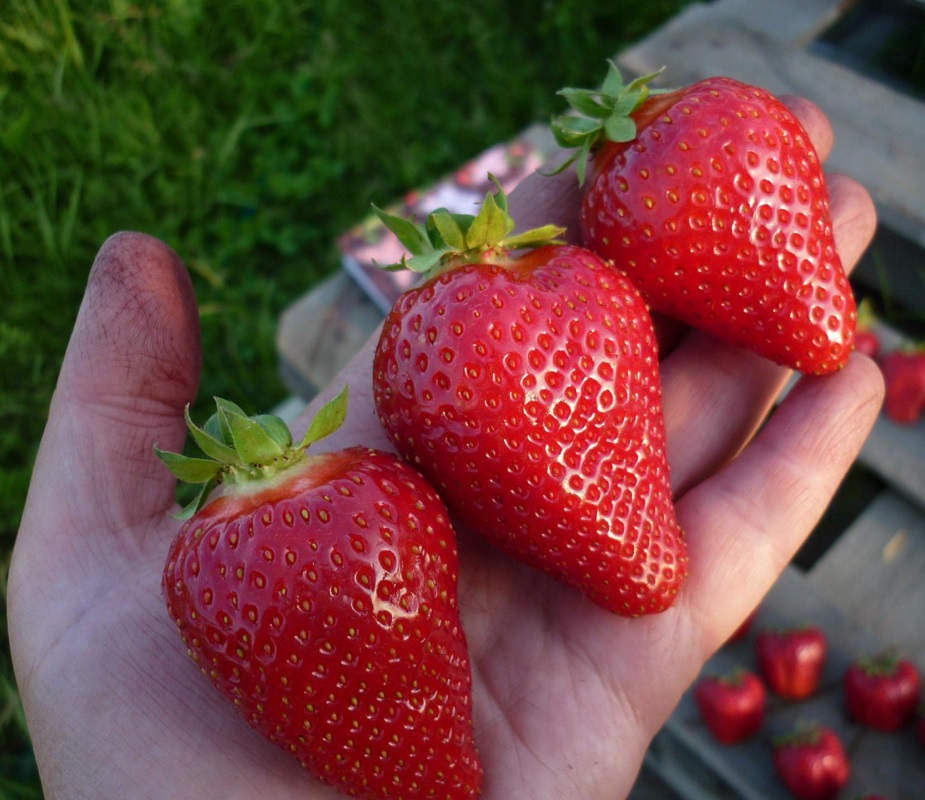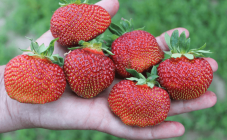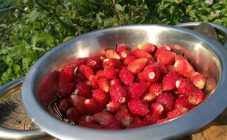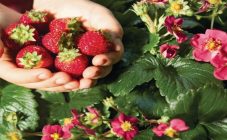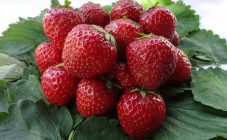Content:
It is difficult to imagine a garden plot without fragrant strawberries. Due to its excellent taste, early maturity, high yield, it is very popular among gardeners and gardeners.
History of culture
Garden strawberries are also popularly called strawberries, victoria. It is a herbaceous evergreen plant. Strawberries are common and remontant, capable of producing a crop 2 times per season. In order for the consumption period to be longer, varieties with unequal ripening periods must be planted on the site.
Alba strawberries are a cross between several varieties. This was done by breeders from a small company called New Fruits, located in northern Italy. They were faced with the task of creating a variety not only transportable, high-yielding, but also with good taste.
The parental varieties transferred their best features to the hybrid: high keeping quality, excellent taste, good presentation. Alba became one of the leaders in the industrial production of garden strawberries in Italy, it was adapted for cultivation in many countries, including Russia.
Description of the strawberry variety Alba
Alba is suitable for growing both in individual gardeners' plots and in industrial production. It gives a friendly harvest, which is especially important in industrial cultivation.
She has vigorous bushes, reaching a height of 30 cm. Strawberry leaves are medium in size, there are few of them on the plant. The weight of the berries varies from 25 to 30 g, their shape is elongated-conical. The taste of the fruit is sweet and sour, the color is red, the flesh is dense.
Strawberry variety Alba belongs to early maturing hybrids. On average, up to 800 g of berries are harvested from one bush, under very favorable conditions - up to 1300 g. It is resistant to heat and to many diseases of the Rosaceae family.
Agrotechnics
Garden strawberry Alba is planted in the place where spicy herbs, radishes, beets, garlic, carrots grew before. By planting it after nightshade crops (potatoes, eggplants, bell peppers, tomatoes), you can get plants infected with various fungal diseases.
This variety of strawberries is planted both in spring and autumn. When planted in the fall, it will bear fruit next year, with a spring planting - in a year. Summer disembarkation is also allowed, if it is late, then it is equated to autumn.
Soil preparation
2-3 weeks before planting, Albs are applied to the soil in moderation: an excess will lead to the fact that the bush will grow green mass, and there will be few fruits. How much and what needs to be added depends on the degree of depletion of the soil: on average, 1 bucket of compost, 70 g of superphosphate, 110 g of potassium salt are consumed per 1 m².
After even distribution of fertilizer, the soil is dug up, while removing the roots of weeds and insect larvae. A site clogged with wheatgrass is undesirable to choose for planting. Weeding will not give a result: it is very difficult to get rid of it.
Landing
Strawberries are planted in 2 ways: bush and lowercase (strip). In the first method, the resulting whiskers are removed, with the strip method, they are directed along the row.Subsequently, the daughter sockets formed by them are rooted.
To get seedlings for summer planting, the rosettes are separated from the mother plant and planted in greenhouses. In late July - early August, the seedlings are ready for planting in a permanent place. When landing, a certain technology is followed.
- The earth is loosened to a depth of about 7-8 cm.
- Yellow, dry leaves are removed, roots are cut to 7-8 cm.
- Pits are made with a depth sufficient for free placement of the root system.
- Seedlings are planted in the holes, spreading the roots well; covered with earth. The distance between the bushes is 15-20 cm, between the rows is 35-40 cm.
- Strawberries are watered, then mulched with peat, rotted manure or compost.
Bushes are planted in cloudy weather. In hot weather, the lower leaves are removed, the seedlings are shaded for several days with grass or newspapers.
Care
When planting in spring, the bushes are mulched with straw. It maintains the optimum temperature and moisture content of the soil, protects the berries from dirt, and also prevents infection with certain diseases. In addition, by rotting, the straw feeds the roots with organic matter.
When planting in summer, strawberries are mulched with humus. Its thickness should reach 15 cm by winter. The characteristic of mulch is that it protects the soil from overheating in summer and freezing in winter. It also retains moisture in the root zone, which is very necessary for a moisture-loving plant.
2 weeks after the spring planting, strawberries are fertilized with organic infusion, with the addition of superphosphate and ash. The next top dressing is when flowers and the first ovaries appear. At the end of summer, organics are no longer used. Before feeding, the soil must be thoroughly shed with water so as not to burn the plant roots.
It is systematically necessary to carry out hilling bushes, especially those growing for a long time in one place. The first time - after harvest, then - in the spring, after the onset of heat. If hilling is not carried out, then the roots are exposed and do not receive the necessary nutrition. As a result, the strawberry weakens, begins to give little harvest, then dies.
Breeding strawberries
To propagate Alba, 3 methods are used:
- dividing the bush;
- daughter rosettes (antennae);
- seeds.
In the first method, healthy bushes are selected, dug out, carefully divided into several parts with a sharp knife. Each section should have a root system and a rosette with leaves. Places of cuts are sprinkled with charcoal or activated charcoal and planted in holes.
To get strong plants from a mustache, you need to take good care of them. They are pinned to the ground and watered abundantly. The strongest are selected, the rest are removed. When the children get stronger, they are transplanted to a permanent place.
Reproduction of Alba through seed is laborious and is not popular with summer residents. It is mainly used for industrial production.
Advantages and disadvantages
Like any variety, Alba has its merits.
Here are some of them:
- early maturation;
- it is frost-resistant, therefore, suitable for growing in the open field;
- for the season is capable of giving a large harvest;
- slightly susceptible to disease;
- dense and large berries are used both fresh and for conservation;
- berries are well transported;
The disadvantages of Alba include the presence of acidity in the berry and insufficient aroma: some gourmets prefer to use sweeter and more fragrant fruits. Some other varieties, for example, the Balba strawberry, are noted with the same disadvantage.
Caring for strawberries, although laborious, as a result, the gardener receives tasty and useful vitamins from his garden. With proper care and attention, Alba will thank you with ripe, tasty and beautiful berries.
